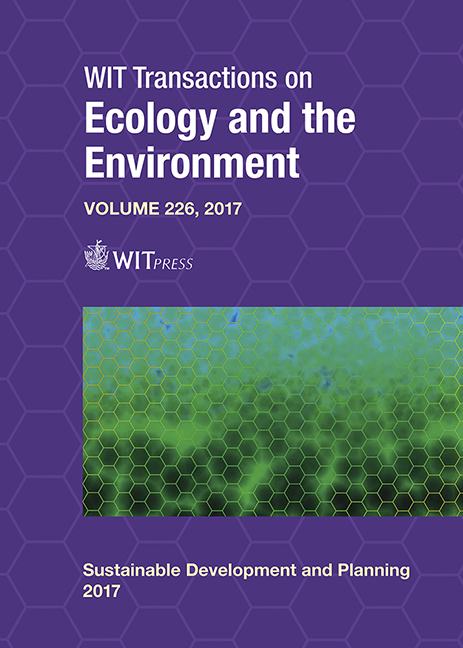STUDIES ON READING THE URBAN CENTRE VIA COGNITIVE MAPS: THE EXAMPLE OF ESKIŞEHIR, TURKEY
Price
Free (open access)
Transaction
Volume
226
Pages
10
Page Range
29 - 38
Published
2017
Size
432 kb
Paper DOI
10.2495/SDP170031
Copyright
WIT Press
Author(s)
AYSEN CELEN OZTURK
Abstract
Cities are open spaces where people exist together, socialize and perform the actions of encountering and meeting others. Urbanites carry out their socio-cultural life through their activities in exterior space within the construct of the urban physical environment. Social structuring emerges in open public spaces, in which the relationship between the individual and society is reinforced by the physical environment. Nevertheless, today, the rapid growth of the uncontrolled urban development in a complex pattern increasingly renders it difficult for the urbanite to detect and easily scrutinize exterior spaces in the city. The environmental image acquired by the individual gives them the feeling of being emotionally secure when bearing this image in mind. The elevated qualities of legibility and wayfinding in the cities are of the most important “urban design principles”. Urban legibility means that an environment is discernable and is perceivable within continuity. The more rapid a city can create an image in mind, the more legible it becomes. In this study, the city of Eskişehir, which is located in the northwestern part of Turkey and has a history that dates back to Phrygian civilization, is scrutinized. Apart from being an industrial and commercial city, Eskişehir has been a university city since the 1950s. Currently, university students comprise 10% of the urban population. In this study, reading the city was carried out via the cognitive map of the university students who experience the city for a while.
Keywords
Eskişehir, cognitive map, legibility, image of the city, sustainable planning





